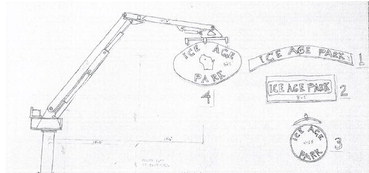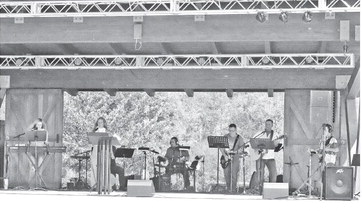Check out the fall colors while there is still time


The temperature has dropped a few degrees, school has started back up, and pumpkin spice flavored-everything is fully stocked everywhere you look.
Fall must be just around the corner. Though the cozy season doesn’t officially start until September 22, Wisconsinites are already eager to embrace autumn and all that comes with it. One of the most enjoyable and widely available fall activities is leaf peeping, or scoping out the area’s deciduous trees in all their splendor. While Taylor County residents and visitors are fortunate enough to peep vibrant leaves nearly any direction you turn your head, some days, and some locations, are better for viewing than others.
The Wisconsin Department of Natural Resources (DNR) tells folks that a warm, wet spring, a summer that isn’t too hot or dry, and a fall with plenty of warm, sunny days and cool nights all make for the brightest colors. But when this year’s weather has been the epitome of the phrase, “If you don’t like the weather in Wisconsin, just wait five minutes,” how can you anticipate where and when to find the best opportunities for taking in the area’s natural fall beauty?
It starts with knowing your stuff. You learned the basics in grade school; as this particular slice of the earth gets less time in the sun, things cool down, triggering the leaves to slow their production of chlorophyll, the cells that turn sunlight into food. What you may have forgotten from your days in the classroom is that, aside from chlorophyll, there are two other pigments that give leaves their colors: carotenoid, which makes orange, yellow, and brown; and anthocyanin, which produces the color red. Almost all deciduous trees carry carotenoid cells, but not all of them can make anthocyanin.
Once the seasons start to turn and that chlorophyll yield eases up, carotenoid cells do what they do best and give you those orange, yellow, and brown leaves you know and love. But what about the reds? To get those, the trees need an autumn full of warm, sunny days and cool, but not freezing, nights, one after another. This is because cool nights prevent sugar produced during the daytime from coursing through the veins of the leaves and into the branches and trunk of the tree. Anthocyanin helps the leaves to retain those nutrients before they fall from the tree to prepare it for the next growing season. The colors created by carotenoids are fairly steady from year-to-year, while the red made by anthocyanin is not.
This means that, while you’re certain to see orange, yellow, and brown leaves, the reds aren’t a guarantee. To catch red leaves you’re looking for trees that are capable of producing anthocyanin, like red maples and sugar maples, red oaks, and scarlet oaks. You may also notice the leaves on the lovely dogwood trees planted in your neighbor’s yard turning crimson at the same time. Experts predict that the peak of fall colors will hit Taylor County between October 5 and October 15.
The best resource for monitoring that peak is the Wisconsin fall color report, courtesy of Travel Wisconsin. This website will tell you the color forecast by week, list the best colors first, and even let you search by location name. It monitors the peak by percentage and color, giving you the most up-to-date information to find exactly where you need to be, and when.
While the weather this fall is likely to coast just above or below average for this time of the year, it doesn’t mean that residents and visitors won’t be treated to a wide array of autumn colors. The last couple of years have been vivid, and this year could be much the same, especially considering that some of the trees lining highways have already taken it upon themselves to put on a show. But where should you go if you’re looking to slow down and take it all in?
There is no shortage of places to enjoy nature in Taylor County. When leaf peeping, locations by water make for a serene visit as the fall colors bounce off lakes, ponds, and swamps and double your viewing pleasure. The Mondeaux Flowage is one such spot, and with 411 acres of water to its name, there’s plenty of room for everyone. If you’re looking to camp, try exploring Picnic Point Campground, Spearhead Point Campground, or the Eastwood Campground.
Jump River is, without a doubt, one of the loveliest places anytime of the year but especially in the fall when the leaves drift from their trees to float on the river below. The wayside off Highway 73 in Jump River is a convenient and scenic location to sit and watch the seasons change. Miller Dam is also a must-see, not only for the fall foliage but for the wildlife that make their home near the pristine waters.
Along with the trails near Miller Dam, the Ice Age National Scenic Trail traverses around the Mondeaux Flowage and also branches towards Perkinstown, a wellknow place for outdoor recreation, giving hikers access to multiple areas within the county. Or you can head the other direction on the trail to Rib Lake, where you can not only peep all the leaves your eyes can handle, but find the perfect place to stop for lunch and do a little shopping in town.
The Pine Line Trail is another ideal path to fall foliage and can be journeyed on foot, horseback, or by bicycle while the Ice Age National Scenic Trail is mostly reserved for hiking. The Pine Line Trail will take you through Rib Lake and has access points in Westboro, Chelsea, Whittlesey, and Medford. When perusing the Pine Line Trail in Medford, you can take a detour to check out the various parks and trails offered right in town. The swinging bridge in Gilman is always a hit in the fall, and it doesn’t get more peaceful than walking the path alongside the Yellow River.
When in doubt, the Taylor County Tourism website offers a complete rundown of where to find all the trails in the county at https://www.taylorcountytourism.com/ trails.
Whatever your preferred method of leaf peeping, Taylor County is the place to be for fall-ing in love with foliage.


